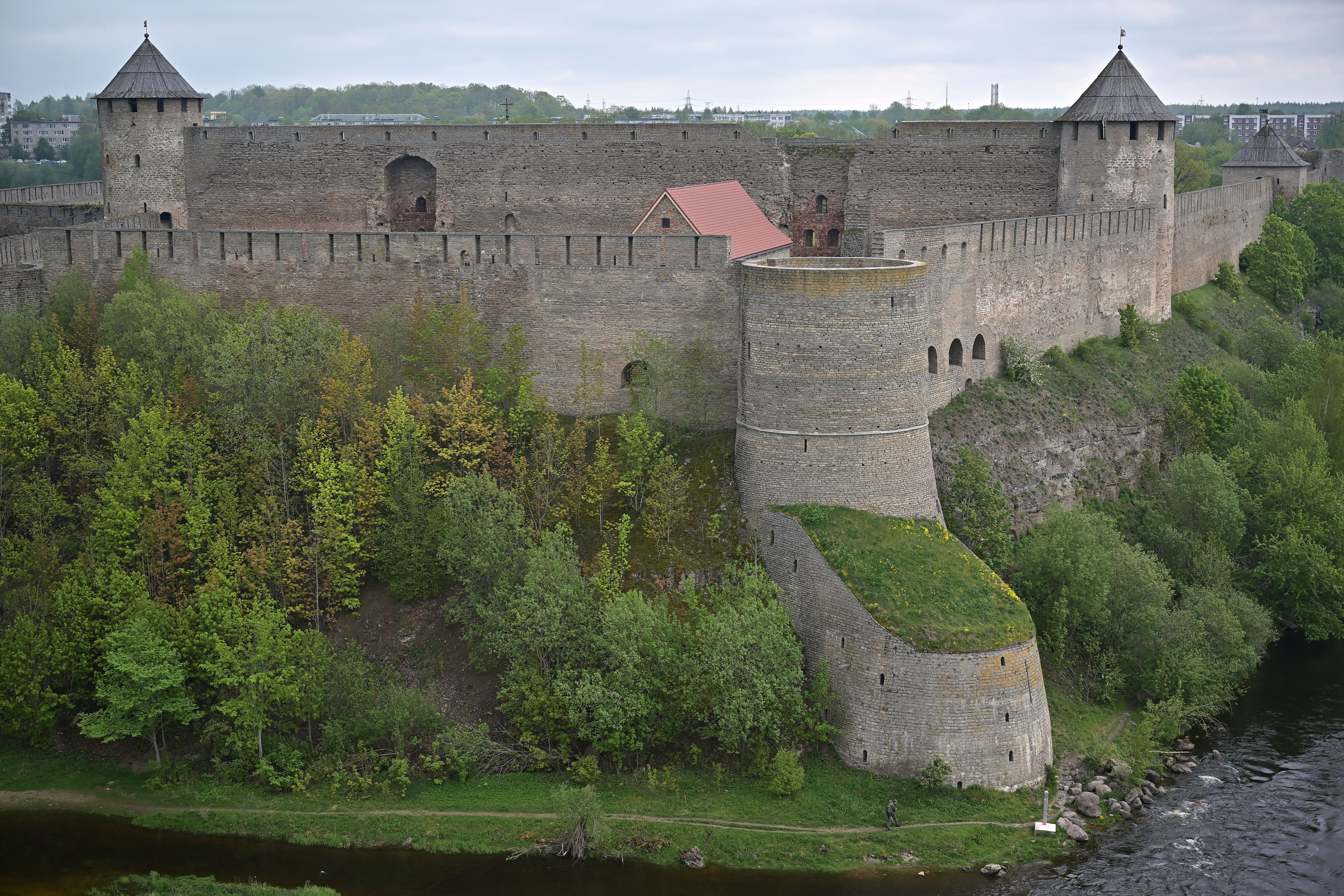While many in the EU worry about far-right gains at the ballot box – those close to Russia crave security
Mary Dejevsky travels to Finland, the Baltic states and Poland, where one issue stands above all others


Between now and Sunday evening, several hundred million people will vote in elections for the next EU parliament, in what is billed as the second-largest exercise in representative democracy in the world after elections in India.
But the numbers actually voting have habitually been far fewer than in national elections, with turnout overall barely registering above 50 per cent, and a lot less in some countries, especially those further east.
There are hopes that this year could see that pattern change. The reason is that these are the first EU-wide elections to be held since Russia’s 2022 invasion of Ukraine. And while the election agenda as seen from the western and southern parts of Europe has been dominated by hostility to migration and cost of living issues, with forecasts of gains for the far right, electoral concerns as seen from the northeast of the EU are different.
How different is what I have been trying to find out, travelling from Finland, through the Baltic states, to northeastern Poland. And here, while you will find a flicker of the same preoccupations that have dominated the campaigning further south and west, the big topic on what is essentially the European Union’s northeastern frontier is summed up in one word: security.
Five years ago, when EU parliament elections were last held, there was certainly far less urgency over the issue. Although there was a security aspect to the EU, it was seen as the responsibility of Nato, and attitudes to Nato diverged. Finland and Sweden were neutral; the Baltic states and Poland were impassioned Atlanticists, while Hungary stood out as a weak link. EU elections anyway largely reflected domestic issues.
The war in Ukraine has changed that. With Finland and Sweden joining Nato, the borders of the EU match those of Nato to a far greater extent than before, even though Austria has retained its neutrality. What is more, by mounting prompt (and mostly united) support for Ukraine, the EU has become associated with the defence of Europe in a way it was not in the past.

This shift has been evident in every country I have visited, where the preponderance of candidates’ campaign pitches focuses on defence and security as never before. There is some evidence, too, that this is translating into a higher level of public engagement.
In Finland, projections suggest that turnout could exceed 50 per cent (compared with the 40 or so per cent in recent EU elections). People were actually stopping to look at the many prominent election posters – not a given at EU elections! I was told that the calibre of candidates had risen markedly, with more seen as having a political future rather than seeking a sinecure in Brussels.
It has to be said that the level of public interest seems to diminish on the route south. Estonians, like Finns, have been exposed to copious advertising, TV and social media coverage, but the EU is less apparent in southern Lithuania and northeastern Poland.
While the war in Ukraine has brought practical changes for all the countries on the EU’s northeastern flank – starting with the arrival of tens of thousands of Ukrainian refugees (generally still welcomed) and cheap Ukrainian farm produce (rather less welcomed by local farmers) – the emphasis on security is less of a change for the Baltic states and Poland than it is for Finland. In the latter, military preparedness was a fact of life, but it went along with the country’s neutrality and its pragmatic relations with Russia.
The Finnish border with Russia is now closed, and legislation is being tabled to combat irregular Russian migration. Some diplomatic channels, it appears, are being kept open, but discreetly. The age-old pragmatism has not been completely lost.

The Baltic states exude a sense of vindication. The rest of Europe, they say, has finally caught up with the reality of Russia’s malign intentions (although still not quite as much as they would like).
The rhetoric often maintains that if Russia were to defeat Ukraine, it would be emboldened to advance into the Baltic and beyond. Which is not out of the question. But there is a lot less certainty on this score on the ground. Partly that might reflect a desire not to tempt fate, but it is perhaps more of a positive surprise at the way EU solidarity has been maintained, generating confidence that it can provide a security umbrella into the future.
This is cited as a reason why support for the EU has held up well – even in countries, such as Poland, with a definite Eurosceptic strand in their politics. Whether this translates into more voter support for its institutions, such as the European parliament, however, is another matter.
The one place where defence infrastructure efforts seemed to be in full swing – and it could just have been elaborate road-building – was in what is known as the Suwalki Gap, a 60km-wide tract of land joining Lithuania to Poland, which has (Russian) Kaliningrad to the west and (Russian satellite) Belarus to the east. The gap has long been seen as a prime point of Western vulnerability that Russia could block and so sever the Baltic states from the rest of European Nato. With Sweden and particularly Finland now in the alliance, that is less of a risk, and it could be Russia worrying about its ships being locked into St Petersburg.

I visited one city: Narva, in eastern Estonia, a place that has long been regarded as most vulnerable for the West and potentially even a fifth column for the Kremlin, given it is largely Russian-speaking. I was there just a few days after accusations (supported by video) that Russia had removed buoys that demarcate the official border running down the Narva river. This in turn was only days after Russia had broached redrawing some maritime borders in the Baltic – a proposition that was subsequently withdrawn.
And first impressions are forbidding. Twin forts face off across the river, the Estonian one painted with huge Estonian, Ukrainian and EU flags. There is a road bridge hung with Cold War-style barbed wire, whose only traffic seemed to be border guards reporting for their shifts, and a station where the train that once took two hours to go on to St Petersburg now stops and returns to the capital, Tallinn.
On the one hand, Narva is a strange and potentially tense place, where there have been flare-ups in the past and could be again. At the same time, it is becoming ever more of a backwater. Its economy is in trouble, having lost trade and Russian daytrippers, and so long as the EU freeze with Russia continues, it is hard to see any sort of prosperous future for the city. The population, now officially 57,000, is in decline, and although Russian speakers account for more than 90 per cent, the mood is muted. Not surprising, given the war and the arrival of refugees from Ukraine.
There will be voting in the EU parliamentary elections in Narva, as in the rest of Estonia, as in the rest of the EU – and there are posters and TV appeals to prove it. But there can be few places that seem further from Brussels just now than this eastern tip of the EU sticking out into Russia, and the abstention rate among the EU’s Russian minority is always high.
There will probably be many more people in Finland, Poland and other now-frontline states that can be expected to turn out and vote with security at the front of their minds.






Join our commenting forum
Join thought-provoking conversations, follow other Independent readers and see their replies
Comments